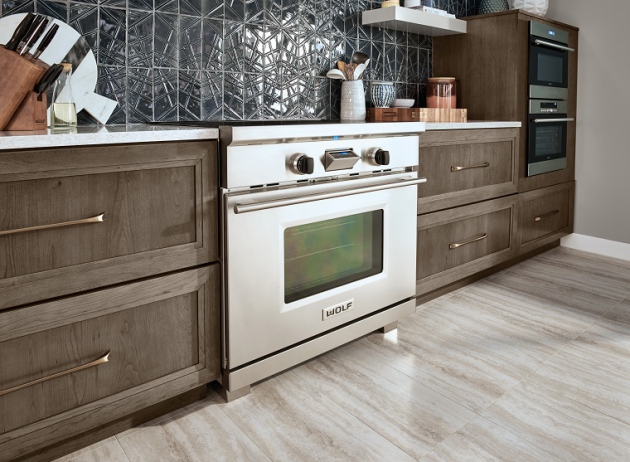A convection oven can produce excellent results that cannot be obtained cooking in a standard oven. While standard ovens produce heat, this has a tendency to dry foods. On the other hand, convection ovens allow the food to retain more moisture. This can take a little getting used to, so here are some tips for convection ovens to achieve the best results.
The Differences in How Convection and Standard Ovens Work
While different models vary in design, most electric ovens have a heating element that is mounted at the top or the bottom of the unit. This standard design of oven relies on radiant heat generated by the elements to cook food. Unfortunately, this design configuration can result in hot and cold spots within the oven. Convection ovens are fitted with an internal fan to circulate the heated air. This allows the hot air to be evenly distributed throughout the oven for quicker and even cooking.
Cooking Times
One of the greatest challenges of upgrading to a convection oven, from a standard oven, is that the cooking times can vary a great deal. When you are used to preparing a meal in a standard oven, you can experience varying results as you start to use a convection oven. Convection ovens require less time to cook foods, so you will need to make adjustments. Depending on the specific model, size of oven, quantity of food, cooking temperature and desired cooking level, you will need to consider dropping the oven temperature by 25 degrees or reducing the cooking time by approximately 15 to 30 percent. This variation in cooking times means that you will need to monitor your dishes carefully, particularly in smaller ovens. Small sized ovens will naturally cook faster, so you will need to take care not to overcook your dish.
The Choice of Ovenware
You may also need to assess your choice of ovenware. Glass baking dishes can cause over browning, so you may need to compensate by reducing the oven temperature by approximately 30 degrees. Some cushion-air pans may not be suitable for your new convection oven. These types of ovenware are designed for use in conventional ovens and therefore allow foods to cook extremely quickly and cause it to burn. You should try to use dishes or pans with low sides to encourage maximum airflow.
Air circulation is important in a convection oven, so you will need to ensure that your cooking pans have at least an inch of space between them. You should also allow a similar amount of space between your oven racks. You will need to ensure that you don’t block the air from circulating, so be careful when using foil or larger dishes that could obstruct the fan.
Some Final Advice
Just like a standard oven, you will need to preheat your convection oven for best results. Some models use just one element when preheating that could cause food to burn, so ensure that your oven is at the correct temperature before putting in your food. If you are using a pizza or baking stone, it should be left in the oven during preheating so that it will be really hot and provide that delicious, crispy crust on your bread or pizza.
Since convection ovens instantly sear meat, there is no need to baste your roasts. All the essential juices will already be locked in, so you can eliminate the need to periodically baste. If you want to use a marinade containing sugar, it is a good idea to wait until the last hour of cooking, so the meat will be seared without allowing the marinade to caramelize and burn.
Convection ovens can provide convenient and efficient option for your kitchen. Browse through the available options with this online collection of ovens or speak to a home appliance expert for further help.

